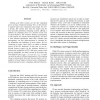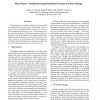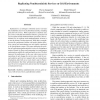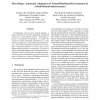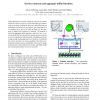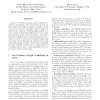HPDC
2006
IEEE
14 years 5 months ago
2006
IEEE
Desktop grid (DG) systems use the idle computing power of many volunteered desktop PC’s on the Internet to support large-scale computation and storage. For over a decade, DG sys...
HPDC
2006
IEEE
14 years 5 months ago
2006
IEEE
Through massive parallelism, distributed systems enable the multiplication of productivity. Unfortunately, increasing the scale of available machines to users will also multiply d...
HPDC
2006
IEEE
14 years 5 months ago
2006
IEEE
HPDC
2006
IEEE
14 years 5 months ago
2006
IEEE
We consider the problem of bulk data transfers and bandwidth sharing in the context of grid infrastructures. Grid computing empowers high-performance computing in a large-scale di...
HPDC
2006
IEEE
14 years 5 months ago
2006
IEEE
Replication is a technique commonly used to increase the availability of services in distributed systems, including grid and web services. While replication is relatively easy for...
HPDC
2006
IEEE
14 years 5 months ago
2006
IEEE
By federating resources from multiple domains, a shared infrastructure provides aggregated computation resources to a large number of users. With rapid advances in virtualization ...
HPDC
2006
IEEE
14 years 5 months ago
2006
IEEE
HPDC
2006
IEEE
14 years 5 months ago
2006
IEEE
— The potential of truly large scale grids can only be realized with grid architectures and deployment strategies that lower the need for human administrative intervention, and t...
HPDC
2006
IEEE
14 years 5 months ago
2006
IEEE
Trace-driven simulation is an important technique used in the evaluation of computer architecture innovations. However using it for studying parallel computers and applications is...
HPDC
2006
IEEE
14 years 5 months ago
2006
IEEE
Grids are becoming a mission-critical component in research and industry. The services they provide are thus required to be highly available, contributing to the vision of the Gri...
